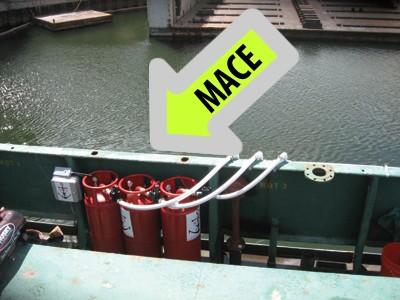Table of Contents
- Recent Changes in International Regulations Governing Pepper Spray Usage
- Detailed Analysis of Key Treaty Provisions Affecting Law Enforcement Practices
- Implications for Cross-Border Trade and Civilian Accessibility of Pepper Spray
- Strategic Recommendations for Compliance and Advocacy in Pepper Spray Policy Updates
- Insights and Conclusions
Recent Changes in International Regulations Governing Pepper Spray Usage
In the past year, several international treaties have introduced tighter controls and clearer definitions on the deployment of pepper spray, reflecting growing concerns over human rights and law enforcement accountability. Nations are moving towards harmonizing their policies, ensuring that the use of pepper spray aligns with global standards aimed at minimizing misuse and preventing excessive force. Key elements include:
- Standardized classification: Recognizing pepper spray as a controlled chemical agent under many international frameworks.
- Usage protocols: Mandating strict guidelines on when and how pepper spray may be deployed, especially in crowd control scenarios.
- Training requirements: Emphasizing comprehensive law enforcement training to reduce inadvertent harm.
These regulations are also pushing for enhanced transparency and accountability, with countries agreeing to adopt mandatory reporting mechanisms after any deployment of pepper spray. This shift is not just regulatory but cultural, encouraging a global dialogue about ethical policing and civilian safety. Additionally, ongoing negotiations in international forums suggest a future where pepper spray use will be subject to even more rigorous oversight to balance public safety with civil liberties.
Detailed Analysis of Key Treaty Provisions Affecting Law Enforcement Practices
International treaties regulating the use of pepper spray by law enforcement agencies have introduced a range of provisions aimed at balancing public safety with human rights concerns. One of the most significant stipulations is the definition of permissible circumstances for deployment, which restricts its use to scenarios involving imminent threats or violent resistance. This prevents indiscriminate application and enforces a framework that prioritizes de-escalation tactics. Additionally, several treaties emphasize the necessity for proper training standards to ensure that officers are well-equipped to handle pepper spray responsibly, minimizing potential harm to civilians and avoiding excessive force allegations.
Another key element is the enhancement of accountability and reporting mechanisms. Law enforcement agencies are now often required to maintain detailed logs of pepper spray incidents, documenting the context, justification, and aftermath to promote transparency. Among the highlighted provisions are:
- Mandatory post-incident medical evaluations for affected individuals
- Clear prohibition of use on vulnerable populations such as children, elderly, and pregnant women
- Regular review and audit of pepper spray usage policies consistent with treaty updates
Together, these treaty provisions not only impose stricter controls but also encourage continuous reassessment of law enforcement practices, ultimately striving for a more ethical and effective approach to non-lethal force application worldwide.
Implications for Cross-Border Trade and Civilian Accessibility of Pepper Spray
Navigating the complex web of international treaties governing pepper spray presents growing challenges for cross-border trade. Variations in legal classifications-from a self-defense tool to a prohibited weapon-significantly impact import and export protocols, leading to delays and increased compliance costs for businesses. Traders must now stay vigilant regarding the evolving regulations enforced by entities such as the UN and regional trade blocs, which often incorporate pepper spray within broader arms control measures. Moreover, customs authorities are intensifying inspections, mandating clear documentation and certifications to differentiate pepper spray from banned chemical agents, which adds another layer of complexity to international shipping.
For civilians, these shifting regulations translate into unequal accessibility depending on the jurisdiction. In some countries, pepper spray remains readily available over the counter, while others demand stringent licensing or outright prohibition due to concerns over misuse or public safety. This disparity not only affects personal security options but also raises questions about equity and legal consistency for travelers and residents alike. Key factors shaping accessibility include:
- Local enforcement policies aligned with international treaty obligations
- Restrictions on online purchases that limit cross-border acquisition
- Awareness and education programs aimed at responsible use and legal compliance
Strategic Recommendations for Compliance and Advocacy in Pepper Spray Policy Updates
To navigate the evolving landscape of international regulations governing pepper spray, organizations must adopt a proactive approach centered on thorough policy evaluation and stakeholder engagement. Regular audits of current protocols ensure alignment with the latest treaty provisions, minimizing legal risks and fostering transparency. Collaboration with legal experts familiar with international human rights law is crucial to interpret nuanced treaty language and integrate compliance measures effectively. Additionally, establishing clear communication channels between policymakers, law enforcement agencies, and advocacy groups helps in balancing enforcement needs with civil liberties.
Advocacy efforts should focus on educating both regulators and the public about the implications of updated guidelines, emphasizing the importance of responsible pepper spray use and human rights considerations. Key strategies include:
- Targeted awareness campaigns that highlight lessons learned from international case studies.
- Workshops and training designed to equip law enforcement with best practices aligned with treaty mandates.
- Policy dialogues that invite diverse voices, including affected communities, to shape inclusive and effective regulations.
These efforts collectively fortify compliance mechanisms and amplify advocacy impact, ensuring that pepper spray policies evolve in a manner that upholds safety, legality, and ethical standards worldwide.
Insights and Conclusions
As international frameworks continue to evolve, staying informed about the latest updates on treaties impacting pepper spray use is essential for policymakers, law enforcement agencies, and advocacy groups alike. These developments not only shape regulatory landscapes but also influence broader discussions on human rights and public safety. By closely monitoring and understanding these changes, stakeholders can better navigate the complexities of pepper spray regulation and contribute to more effective and responsible governance worldwide. Stay tuned for further insights as this dynamic area of international law continues to unfold.Check Our Other Blogs
- StunGun – Your Trusted Source for Stun Guns, Laws, and Self-Defense Tips
- PepperSprayLaws – Your Trusted Resource for Pepper Spray Information
- StunGunLaws – Your Trusted Guide to Stun Gun Legality and Safety




